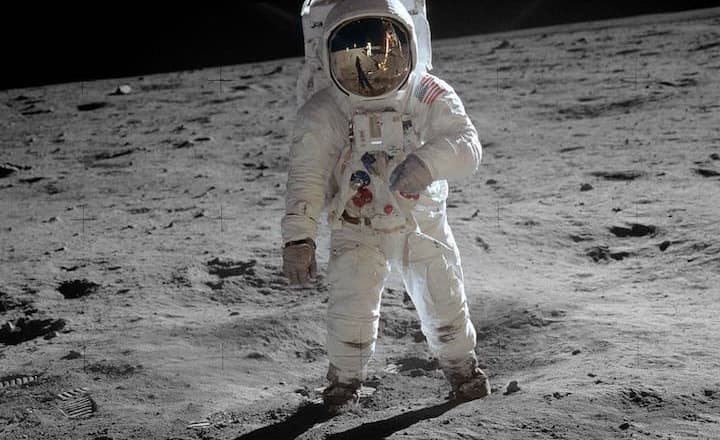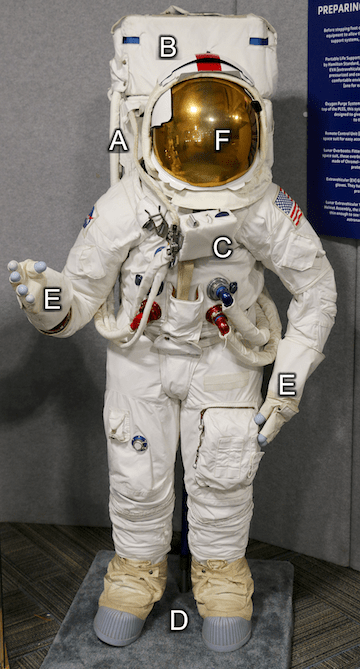What does Connecticut have to do with the Apollo program and manned spaceflight? More than you think! From Project Mercury to the present, Connecticut’s aerospace industry has been instrumental in helping man reach the stars.

Apollo-era Emu
KEY FEATURES
Portable Life Support System (PLSS) Backpack - [A]
Designed, developed, and tested by Hamilton Standard, the PLSS provided life support to an astronaut during lunar EVA (extravehicular activity). It supplied oxygen, removed carbon dioxide, pressurized and cooled the spacesuit, and controlled humidity to provide a comfortable environment for the astronaut. Twelve of these backpacks (one for each astronaut), left behind to conserve weight, are still on the surface of the Moon.
Oxygen Purge System (OPS) - [B]
An emergency oxygen supply that was mounted on top of the PLSS, this system consisted of two tanks at a pressure of 6000psi. It was designed to give astronauts a half hour of oxygen, enough to return to the Lunar Module if they ran into trouble.
Remote Control Unit (RCU) - [C]
This unit would be mounted on the chest area of the space suit for easy accessibility and provided proper control of the PLSS and OPS.
Lunar Overboots [D]
Fitted on top of the boots already worn and integrated into the space suit, these overboots incorporated blue silicone tread and an outer covering made of Chromel-R, a woven nickel-chrome fabric designed for thermal protection and abrasion/puncture resistance.
Extravehicular (EV) Gloves - [E]
These slipped on over the astronaut's IV pressure gloves. They had silicone fingertips and, like the overboots, were protected by an outer layer of Chromel-R.
Lunar Extravehicular Visor Assembly (LEVA) - [F]
Designed to fit over the Pressure Helmet Assembly, the inside of this visor was vacuum coated with 24-karat gold thin enough to see through. The entire assembly was designed to protect astronauts from the sun's harmful ultraviolet rays.




